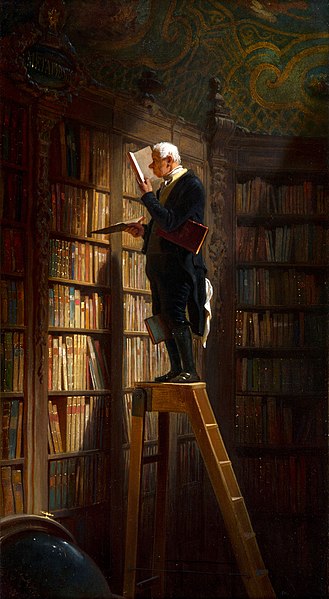Two perplexing roofs, by Kokichi Sugihara of Japan’s Meiji Institute for Advanced Study of Mathematical Sciences.
I suppose these could be designed at scale!
Two perplexing roofs, by Kokichi Sugihara of Japan’s Meiji Institute for Advanced Study of Mathematical Sciences.
I suppose these could be designed at scale!

“A multitude of books confuses the mind. Accordingly, since you cannot read all the books which you may possess, it is enough to possess only as many books as you can read.” — Seneca, Moral Letters to Lucilius
The second professor of mathematics in the American colonies suggested reckoning coins, weights, and measures in base 8.
Arguing that ordinary arithmetic had already become “mysterious to Women and Youths and often troublesome to the best Artists,” the Rev. Hugh Jones of the College of William and Mary wrote that his proposal was “only to divide every integer in each species into eight equal parts, and every part again into 8 real or imaginary particles, as far as is necessary. For tho’ all nations count universally by tens (originally occasioned by the number of digits on both hands) yet 8 is a far more complete and commodious number; since it is divisible into halves, quarters, and half quarters (or units) without a fraction, of which subdivision ten is uncapable.”
Successive powers of 8 would be called ers, ests, thousets, millets, and billets; cash, casher, and cashest would be used in counting money, ounce, ouncer, and ouncest in weighing, and yard, yarder, and yardest in measuring distance (so “352 yardest” would signify 3 × 82 + 5 × 8 + 2 yards).
Jones pressed this system zealously, arguing that “Arithmetic by Octaves seems most agreeable to the Nature of Things, and therefore may be called Natural Arithmetic in Opposition to that now in Use, by Decades; which may be esteemed Artificial Arithmetic.” But he seems to have had no illusions about its prospects, acknowledging that “there seems no Probability that this will be soon, if ever, universally complied with.”
(H.R. Phalen, “Hugh Jones and Octave Computation,” American Mathematical Monthly 56:7 [August-September 1949), 461-465.)
A simple and surprisingly effective illusion by Lisbon anamorphosis specialists Sonhos com Dimensão.
Gary Foshee presented this puzzle at the 2010 Gathering for Gardner:
I have two children. One is a boy born on a Tuesday. What is the probability I have two boys?
The first thing you think is ‘What has Tuesday got to do with it?’ Well, it has everything to do with it.
He proposed the answer 13/27, with this reasoning:
There are 14 equally likely possibilities for a single birth — (boy, Tuesday), (girl, Sunday), and so on.
If all we knew were that Foshee had two children, then it would seem that there are 142 = 196 equally likely possibilities as to their births.
But we know that at least one of his children is a (boy, Tuesday), and only 27 of the 196 outcomes meet this criterion. (There are 14 cases in which the (boy, Tuesday) is the firstborn child and 14 in which he’s born second, and we must remove the single case in which he’s counted twice.)
Of those 27 possibilities, 13 include two boys — 7 with (boy, Tuesday) as the first child and 7 with (boy, Tuesday) as the second child, and we subtract the one in which he’s counted twice. That, Foshee says, gives the answer 13/27.
This generated a lot of discussion when it appeared — unfortunately because the meaning of Foshee’s question is open to interpretation. See the end of this New Scientist article and the comments on Columbia statistician Andrew Gelman’s blog.
Dark Matter (2014), by the artistic collaborative Troika, manages to be a circle, a hexagon, and a square all at once.
The same group had created Squaring the Circle a year earlier.

If I roll three dice and multiply the three resulting numbers together, what is the probability that the product will be odd?
American furniture artist Wendell Castle’s 1978 Chair With Sports Coat is really neither — it’s an eye-deceiving sculpture carved from maple.

In 1895 French writer Georges Polti drew up a list of every dramatic situation that might arise in a story or performance, based on an earlier list drawn up by Venetian playwright Carlo Gozzi. They number only 36 — Polti listed the elements necessary for each:
Each situation has its variations; for example, The Count of Monte Cristo is a Revenge for a False Accusation, a variation on the Crime Pursued by Vengeance; and Great Expectations is a Life Sacrificed for the Happiness of a Relative or Loved One, a variation on Self-Sacrifice for Kindred.
“Van Gogh Observes” by Joe Fafard. Found outside Mayberry Fine Art in downtown Toronto. from r/Damnthatsinteresting
This sculpture, by Canadian artist Joe Fafard, has been scrutinizing passersby on Dundas Street in Toronto.
The principle is somewhat the same as Binary Arts’ mistrustful dragon.